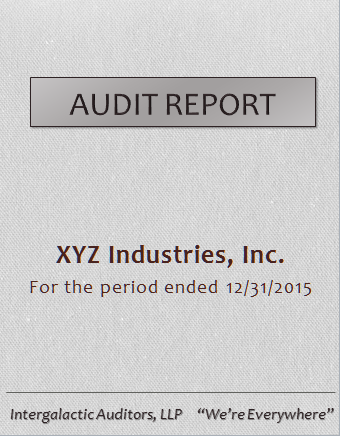NOTE / DISCLOSURE: We [FinSoft, LLC] make great ABL Audit (AssetWriter) and download software (AssetReader / Asset Archive, AssetArchive Confirmations) that do extensive analysis without the time needed to adjust things. Our ABL field exam software can even consolidate hundreds of divisions with just four mouse clicks or bring in data from other examiners and AssetReader downloads. Our AssetReader setups are often shared with Operations and Field Exam for fantastic integration and cross-department consistency. AssetReader download software pulls in reports that no other software in the world can. That means real-world time savings and happy users too. Our training courses are the high standard of the industry and we take a lot of time to write and prepare our courses – see www.abltrain.com for our self-paced ABL Training Seminar Courses for your education needs. Finally, the author of this Blog is a CPA and this article sheds light on what the scope of a CPA or CA Audit covers and does not cover (CPAs / CAs will be happy with scope clarification).
Stand in The Borrower’s Shoes for a Minute
It is not surprising that the Borrower, especially a Borrower that has no ABL experience would ask about why they need to have and pay for an ABL Audit. Consider their position:
- They just paid $$$$$ for an audit
- They just went through the time it took to get that audit done
- They will incur additional fees for the ABL field examination per day
- They might incur travel expenses for the field examiners
- The ABL is not willing to share the examination with them
(just the negatives findings)
Looking at that Borrower list of reasons, maybe you’re glad it’s not your money and you’re not a Borrower? But the cost of doing a commercial loan is a combination of fees, interest, legal, Accounting, Audit, Field Exams, Appraisals, background checks, Etc. WOW that costs some $$$$$! Getting that loan is more than just interest cost to the Borrower.
… and after a minute of reflection, the Borrower’s voice …
“But I just had a CPA / CA audit…”
A baker’s dozen – Why the ABL Field Examination?
1. Taken as a Whole
 CPAs / CAs provide an opinion on the financial statements “Taken as a whole.” So what’s that really mean? It means that there might be a little bit of error here and there, but the numbers are approximately right. Some people liken this to “how out of focus the vision of the truth is.” Imagine seeing a ship on the horizon, but not being able to determine the color, the size or the type of the ship. As it approaches you get more details and a better picture and your brain sees it as a cargo ship, but you never get too close to the details like the railings, the ladders, the doors as you stand at the shore.
CPAs / CAs provide an opinion on the financial statements “Taken as a whole.” So what’s that really mean? It means that there might be a little bit of error here and there, but the numbers are approximately right. Some people liken this to “how out of focus the vision of the truth is.” Imagine seeing a ship on the horizon, but not being able to determine the color, the size or the type of the ship. As it approaches you get more details and a better picture and your brain sees it as a cargo ship, but you never get too close to the details like the railings, the ladders, the doors as you stand at the shore.
Taken as a whole means that the positions stated on the financial statements are approximately correct and not materially wrong. How much would your opinion of a company change if you knew the numbers for revenues, income, assets, liabilities and equity were approximately 95% correct. A similar company would still be comparable and you would not be materially mislead, just a bit out of focus in one or more areas, but it would be correct when taken as a whole.
Asset Based Lenders need more details because the error in their collateral should be small and while one asset deficit could be offset by another asset’s surplus and it is a good 95% correct when taken as a whole, that is not good enough to monitor and lend on collateral that needs to be more in focus.
2. Point in Time
Maybe you’re a neat person and when you have company at your house or business, always in perfect order. Or maybe when you have company you cleanup a mess and shove stuff in the closets, basement and garage? At the point in time that your guests arrive, all is neat and orderly. Accounting data is often a mess and it takes a lot of cleanup work. Sometimes the adjustments from prior years are not booked to the accounting system and the CPAs / CAs make a cumulative prior year(s) adjustment plus the current year adjustments. It looks all nice and neat when you get those crisp cotton bond pages bound by the CPA / CA firm doesn’t it? But there is another story about how it got to be that way. It is often a massage this, nip that, tuck this, adjust that process to get to a CPA statement.
That CPA / CA report is probably OK when taken as a whole and for the time periods shown (people worked hard to get it that way). But an ABL lender needs to get reports at least monthly and perhaps daily or per borrowing in some cases. How reliable is the reporting on a daily, weekly or monthly basis? The CPA / CA audit has no focus on that.
3. Finding Dilution
 Dilution to an ABL Lender is the non-cash adjustment that washes-down the AR collateral. Put another way, “Does a dollar of sales turn into a dollar of cash?” In general, the answer is no. But the CPA / CA audit is showing all of the numbers net of these adjustments. Many adjustments are credit memos, charge-backs, write-offs, finance charges and finance charge write-offs, cash discounts, short pay adjustments and more (see below). The audit report does not show these adjustments and the audit itself might not look at these adjustments at all if they are considered immaterial or when the accounting treatment is considered sound and when it properly states the net balance based on professional judgment of the CPA / CA.
Dilution to an ABL Lender is the non-cash adjustment that washes-down the AR collateral. Put another way, “Does a dollar of sales turn into a dollar of cash?” In general, the answer is no. But the CPA / CA audit is showing all of the numbers net of these adjustments. Many adjustments are credit memos, charge-backs, write-offs, finance charges and finance charge write-offs, cash discounts, short pay adjustments and more (see below). The audit report does not show these adjustments and the audit itself might not look at these adjustments at all if they are considered immaterial or when the accounting treatment is considered sound and when it properly states the net balance based on professional judgment of the CPA / CA.
Asset Based Lenders take dilution seriously and it is a big factor in the analysis of advance rates used on the Borrowing Base Certificate. Someone (a Field Examiner) needs to go in and do a “history lesson” on the monthly sales and collections and adjustments that run through AR, Inventory and often payables too. It takes time and patience to focus on those collateral dilution and adjustment issues.
4. Discounts and Allowances
The section above mentions discounts and allowances and a first year accounting student would know that those amounts come right after revenues. But the CPA / CA audit presents revenues as a net number (and as noted above, net of the credit memos, write offs, adjustments, finance charges, Etc.). So looking at revenues on an audit is not helping you to know about these discounts. A lot of companies don’t bother with this category at all, they just issue credit memos for any receivable write-down.
The ABL Lender needs to get a grasp on this reporting to determine if the discounts and allowances are processed against AR and when. Not a big deal if they have no discounts and allowances or it goes somewhere else like through credit memos. The question is all about how much dilution comes from that category and will the lender get that information in a timely reporting manner (rather than a year-end cleanup by the accountants). The focus on this area might show empty entries (for good or bad reasons) with timely entries or delays in processing the adjustments. As long as it is approximately correct at the date of the year-end audit, then it is not materially wrong as presented by the CPA / CA firm.
5. Net Sales (find the credits)
The books and records might have credit memos processed every month. In some cases the volume of credit memos might be just 1-3% and in other cases 10-15%. But the CPA / CA audit shows net sales and the volume of credit memos is hidden from sight. Ongoing new sales have not yet gotten the cleanup treatment (it can take a day or weeks or months). Did the accountants consider the credit memos that might dilute the outstanding receivables when formulating reserves? How much is that? I’ll bet you can’t see that on the financial statements taken as a whole.
The ABL lender needs to get the timing and the volume of these credit memos and gross-up the net sales so that dilution can be computed against the gross billings. Some formulas:
Net Sales + Credit Memos = Gross Sales
Gross Sales – Credit Memos = Net Sales
Obviously the ABL Lender wants to know how much cash a dollar of sales can make and it is usually not a dollar. So gross Billings is the “dollar” in this case and the credit memos and other non-cash adjustments are the dilution against that dollar. A selection of the credit memo activity is usually analyzed to see what drives the credit memos (by reason code) and how dilutive the items might or might not be. But it takes a focus on the AR Stats to get that information and audit reports taken as a whole just don’t have that.
6. Records
 A Lender that specializes in ABL needs to have good records to rely upon because of the monthly, weekly, daily reporting requirements for the Borrowing Base. It is financial statements (Income Statement, Balance Sheet, Cash Flows, Reconciliation of Retained Earnings, reconciliation of collateral documents to the Borrowing Base, Etc. ) that are needed. But lenders that do daily or as-needed advances might want billing journals and cash journals or even inventory reports. The field examinations from the Lender could take a long time if the records are a mess and require manual adjustments.
A Lender that specializes in ABL needs to have good records to rely upon because of the monthly, weekly, daily reporting requirements for the Borrowing Base. It is financial statements (Income Statement, Balance Sheet, Cash Flows, Reconciliation of Retained Earnings, reconciliation of collateral documents to the Borrowing Base, Etc. ) that are needed. But lenders that do daily or as-needed advances might want billing journals and cash journals or even inventory reports. The field examinations from the Lender could take a long time if the records are a mess and require manual adjustments.
ABL Lenders want push-button quick accounting extracts and reports. They want to focus fast and clearly and they want it to be reliable. But how reliable is it? It takes on-site field examination efforts to determine that. Also, revisit #2 above, the audit was a cleaned-up point in time, not necessarily how it all works day-to-day.
7. Monthly Trends
 That annual audit is indeed a point in time with this year and last year all cleaned up. But seasonal trends can show a top and bottom for financial needs and even seasonal losses. The deal structure should accommodate those needs. But the audit has just one (or two) points in time and that is not going to show all of the different trends and seasonal needs. Asset Based Lenders require trended data to see the past and help companies through trend cycles. A monthly focus? Yes, but weekly or daily in some cases.
That annual audit is indeed a point in time with this year and last year all cleaned up. But seasonal trends can show a top and bottom for financial needs and even seasonal losses. The deal structure should accommodate those needs. But the audit has just one (or two) points in time and that is not going to show all of the different trends and seasonal needs. Asset Based Lenders require trended data to see the past and help companies through trend cycles. A monthly focus? Yes, but weekly or daily in some cases.
8. Inventory Goes Round and Round, or Maybe Some Just Sits?
After the CPA / CA audit has evaluated many things and the numbers are about right when taken as a whole we get a nice Inventory number. If inventory turns in 90 days, then by the time the audit is issued, the inventory would have turned over in many cases. Those net inventory numbers (net of a reserve for this, a reserve for that…) are constantly changing due to sales and purchases. Can the Borrower report in a timely manner to the lender? How much did the CPAs adjust at year end? How reliable are the inventory reports that will be sent to the lender?
It is through more detailed testing that the Lender can perform test counts, cost testing and turnover analysis. Maybe the Lender can discover a slow moving or obsolescence report? But the point-in-time nature of an audit is not the balance right now and the point in time cleanup of the accountants is not going to help with reliable and ongoing accounting that gets reported to the Lender periodically. The ABL Lender needs to focus on the reliability of reporting for inventory.
9. Software Downloads
My career in Audit started in 1984 and that included some downloading of data via 1200 baud modem using Kermit. We could pull monetary unit samples from large companies for confirmations and inventory selections. But we still did a ton of spreadsheet stuff to get numbers collated and corrected for many audits. Fast forward just 30 years to 2014 and manual adjustments, messy agings and inventory reports are still here. Yuk!, you sure don’t see that in that spiral bound audit report.
Can you download data from their system and get it processed correctly? Can the Borrower report electronically at any time? What is the depth of the available reporting (AR, Inventory, AP, Sales and cash journals, Etc.). Great tools make difficult or impossible reports available for electronic analysis [yeah, we make the software that does this]. A focus on data gathering is a big win for the Field Examiners and the Operations staff and when tracked over time, that data can reveal problems before a field examination and data can feed confirmations or requests for documentation from the account officers. It saves a lot of staff time and that reduces operating costs for the lender. It reduces fraud and mitigates losses too.
10. Financial Analysis Details
 A typical audit will include the required elements in an audit such as a Balance Sheet, Income Statement, Statement of Cash Flows, Reconciliation of Retained Earnings and Footnotes. Bigger divisions (ten percent or more) will be listed with some additional detail. But most of the items shown are net of all adjustments and are rolled-up from many related categories. For example, SG&A expenses will appear as one line, yet may contain 500 lines of detail. Same with cost of sales. The Balance sheet items might be net of reserves and they will certainly be net of the CPA / CA adjustments that bring the numbers back in-line to materiality requirements (see below).
A typical audit will include the required elements in an audit such as a Balance Sheet, Income Statement, Statement of Cash Flows, Reconciliation of Retained Earnings and Footnotes. Bigger divisions (ten percent or more) will be listed with some additional detail. But most of the items shown are net of all adjustments and are rolled-up from many related categories. For example, SG&A expenses will appear as one line, yet may contain 500 lines of detail. Same with cost of sales. The Balance sheet items might be net of reserves and they will certainly be net of the CPA / CA adjustments that bring the numbers back in-line to materiality requirements (see below).
The ABL practitioner needs to see details and support for the numbers in the financials. I could list dozens of examples but consider just one here. A company that builds delivery or maintenance trucks of some kind records revenues when the finished truck has passed quality control inspection. Yet the P.O.s from the customers clearly state “FOB Shipping Point.” That little difference in title transfer and revenue recognition was $2.5 Million in Gross profits and it made it through an audit from one of the biggest accounting firms in the world. You need to get closer to the detailed numbers to see the netting and accounting of the data both month-to-month and then as presented and that annual audit report to help assess reliability.
11. CPA Materiality Percent ±
The word “Materiality” may be calculated by the CPA / CA on a per Asset and “Taken as a whole” basis. For example, the AR might be off by ±3% and the inventory might be off by ± 4% and fixed assets might be ± 1% with an overall materiality of 4% or 3%, Etc. Note that some of the testing depth is based on internal control strengths and weaknesses. Weak internal controls will mean more testing in a given area and could mean, for example, the difference between CPA / CA test counts of well controlled inventory and a total count of sloppy inventory (the latter more expensive and a clue to an Asset Based lender that inventory accounting reliability is maybe not so good). But the audit does not mention the hours spent fixing the problem, it only reflects the need to get the net to the materiality level.
With 3% materiality, would you care if AR is $10,000,000 or $10,300,000 or 9,700,000 when considering the overall size of the company and performance? Probably not as an investor, but as an ABL lender, you want to know that receivable collateral is 100% correct and properly reported.
The original inventory could have been -12% and then the CPA / CA adjustments put it back to ± 3%.Remember the CPA / CA audit will adjust those errors out from testing that they do and they will get those numbers closer to 100% correct through adjustments. The ABL Lender is getting real-time push-button reports every month or week or day and they are not adjusted. So how good are the reports when the audit minions are not adjusting things? That closer look validates the reporting accuracy and some findings can lead to reserves.
12. Lifestyle of Owners
 Way back in my Barclays days, I heard about a deal (Leveraged Buyout) that had a wild-child new owner that took the Loan money and had a blow-out loan closing party, purchased an Aston Martin and proceeded to live a great lifestyle with the corporate credit cards to the tune of $100,000 per month (a mistress too). And his wife had a company that made very simple railroad freight car products and she was pulling $200,000 out of the company with close to no sales dollars. Yeah the deal blew up. I have not yet seen a CPA / CA audit report with pictures of the owner on her yacht or with her Ferarri collection, so the audit report paper is barely two dimensional in many ways. Yes, some owners are self-made inventor / investor types, but they can still have a cash draining lifestyle.
Way back in my Barclays days, I heard about a deal (Leveraged Buyout) that had a wild-child new owner that took the Loan money and had a blow-out loan closing party, purchased an Aston Martin and proceeded to live a great lifestyle with the corporate credit cards to the tune of $100,000 per month (a mistress too). And his wife had a company that made very simple railroad freight car products and she was pulling $200,000 out of the company with close to no sales dollars. Yeah the deal blew up. I have not yet seen a CPA / CA audit report with pictures of the owner on her yacht or with her Ferarri collection, so the audit report paper is barely two dimensional in many ways. Yes, some owners are self-made inventor / investor types, but they can still have a cash draining lifestyle.
Hands-on data gathering, background investigations and just being there matters. Asset Based Lenders may allow the cash flow to the owners to be consistent with earnings performance and you need to get a little bit closer and more in focus to see that.
13. Confidence to Make Decisions / Exception
Finally, when you look at the dozen items above and we have that ABL field examiner (and appraisers and background checks experts) checking it all out, we have more field-level intelligence to work with. That might reveal some reserves that need to be in place here and there, but the collateral reporting and control is now smarter too. When decisions from the Lender are needed, there might be greater confidence from the tighter record keeping and past field experience so that exceptions and problems are respected and trusted enough to keep the company going. No interest rate of fee or cost or audit report can compare to the value of building a company with a partnership of Lender and Borrower confidence. Closer and in focus knowledge matters.
Conclusion
The CPA / CA Audit shows us the adjusted and GAAP accounting presentation with rolled-up summary numbers. That is a foundation to compare internal records against. But it is an overall big picture and taken as a whole approach that lacks details for reporting and loan monitoring. We ABL people sure do look at a lot of detail on specific areas that a CPA / CA report just cannot show. More detail puts the ABL issues in focus. ![]()
Copyright © 2015 Clear Choice Seminars, Inc. All Rights Reserved
Images licensed from Fotolia.com or produced by Joe Caplan


